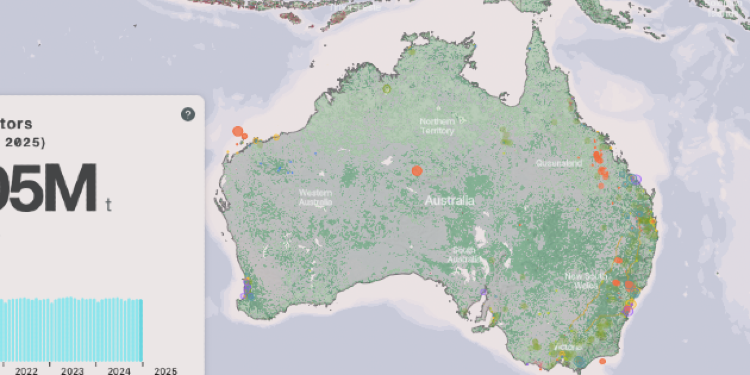Greenhouse gas in plain sight
Could this newly-released monthly data indicate the world is moving (ever so slightly) in the right direction?

Climate TRACE, which recently began releasing real-time global emissions data, has recorded its first small decline.
Co-founded by climate campaigner Al Gore, the global not-for-profit coalition of over 100 universities, scientists and AI experts says it aims to improve the visibility of carbon dioxide and other pollutants in the atmosphere with more accurate and independent real-time data.
“While our preliminary data indicate that the world is – ever so slightly – moving in the right direction, as we measure subsequent months, we will know more about whether this is a consistent trend or a one-off,” Climate TRACE said.
It began publishing its monthly data updates on key sectors in March, which could help to establish whether or not global emissions have reached their peak, the coalition said.
As the monthly data is released with a 60-day delay, Climate TRACE says the global March dataset revealed that January 2025 emissions reached 5.26 billion tonnes of carbon dioxide equivalent (CO2e) – a 0.59% drop from January 2024, while methane levels remained relatively flat at 32.24 million tonnes.
The Australian CO2e figures also showed a small reduction on preliminary figures of 68.05 million tonnes for January, slightly down from 68.62 million tonnes recorded in January the previous year.
"While our preliminary data indicate that the world is – ever so slightly – moving in the right direction, as we measure subsequent months, we will know more about whether this is a consistent trend or a one-off."
According to Climate TRACE, the global December 2024 and January 2025 CO2 emissions data marked the first year-on-year monthly declines since the COVID-19 pandemic, and the beginning of its monthly emissions tracking when it launched in 2021.
The project has since grown into a global initiative tracking over 660 million individual sources using satellite imagery, machine learning, and data from hundreds of public and commercial sources. This is in stark contrast to previous data collection methods that often relied on polluters self-reporting their own emissions.
Its goal is to allow stakeholders such as policymakers and researchers to track changes with greater confidence and speed, as it tracks emissions in real-time right down to individual facilities such as power plants, oil and gas operations, and industrial sites.
The Carbon TRACE monthly updates supply data on carbon dioxide, methane, nitrous oxide emissions, and extend to every country and state worldwide with over 9,000 cities and more than 660 million individual sources.

Climate TRACE uses satellite imagery, machine learning, and data from hundreds of public and commercial sources to track emissions at the asset level. The technology draws on artificial intelligence to map emissions from facilities such as power plants, oil and gas operations, and industrial sites. From March 2025, the group began publishing monthly updates with a two-month delay. The data is refreshed and published on the last Thursday of each month, and includes not just the latest emissions estimates but also revised figures from previous months to reflect new sector-specific data.





